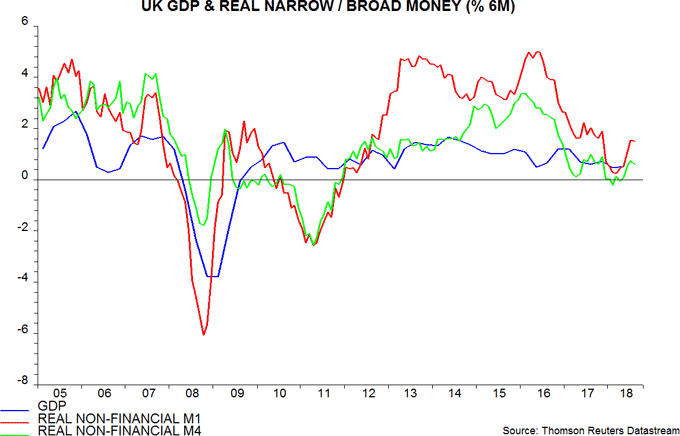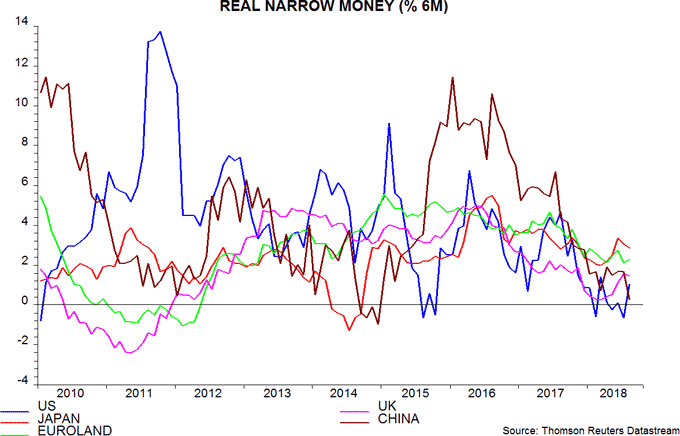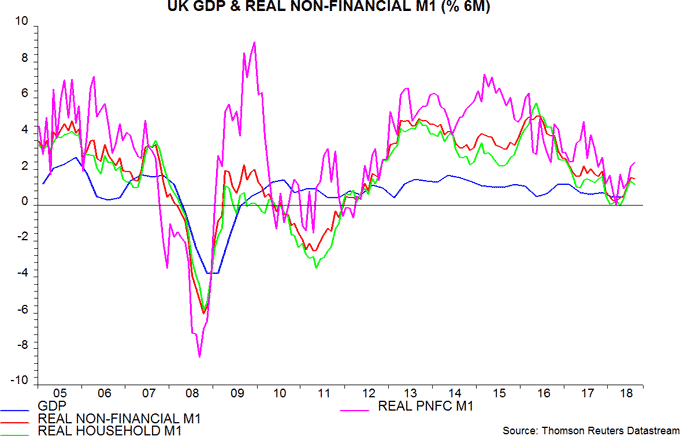UK money trends: recovery not yet convincing
UK monetary trends are less negative than in early 2018 but still suggest a lacklustre economic outlook. The August rate hike, moreover, could serve to abort the monetary recovery.
Six-month rates of change of real (inflation-adjusted) narrow and broad money – as measured by non-financial M1 and non-financial M4 – bottomed in February-March and recovered into July. This suggested that economic prospects were starting to improve before the August rate hike. August monetary numbers released today show a small set-back in real money momentum – see first chart. This set-back was driven by a rebound in six-month consumer price inflation in August, which offset a further improvement in nominal money trends.

Monetary data for September / October will be important for clarifying economic / equity market prospects. A further recovery in six-month real money momentum would suggest stronger economic growth in the first half of 2019 than currently expected by a gloomy consensus – assuming no cliff-edge Brexit. This could warrant adding to UK equity exposure, following further significant underperformance during the first nine months of 2018. As of August, six-month real narrow money growth was still below levels in Japan and Euroland but the gap has narrowed – second chart.

The risk, of course, is that monetary trends weaken in response to the August rate hike, as they did following the prior November increase.
The third chart shows a sectoral decomposition of real narrow money momentum between households and private non-financial corporations (PNFCs). The corporate component, surprisingly, recovered further in August, suggesting improving prospects for business spending. It is possible that Brexit uncertainty is boosting corporations’ precautionary demand for money, although such demand normally affects broad rather than narrow money trends.


Reader Comments